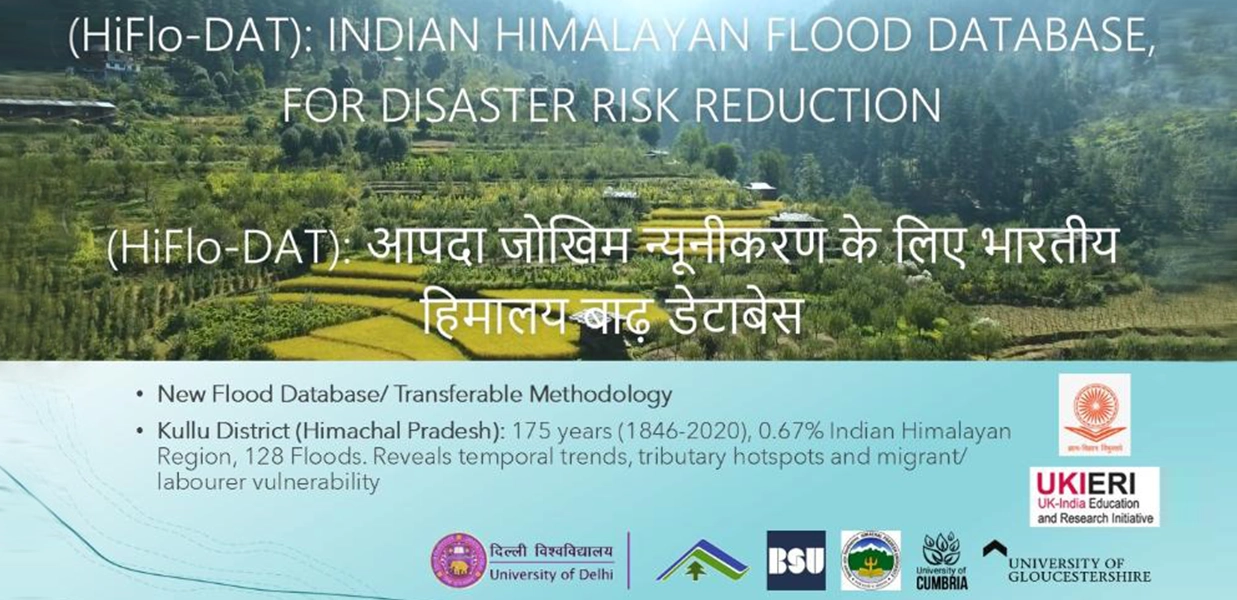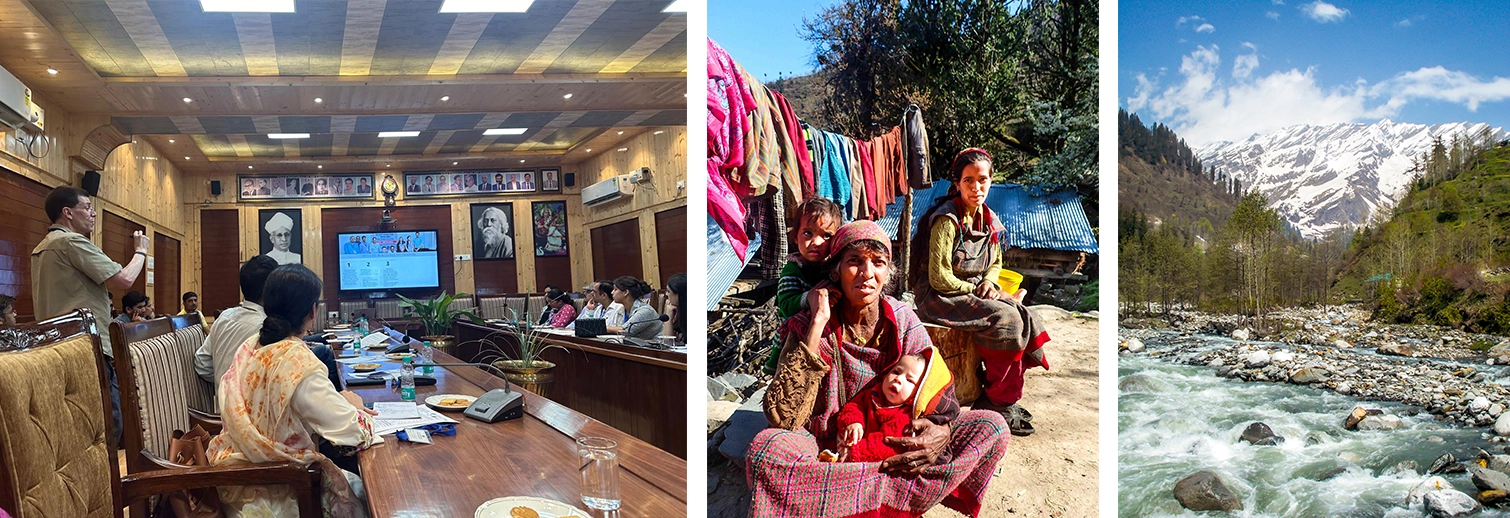
Mountain environments and societies continue to experience rapid change, reflecting interconnected stressors of climate variability, habitat degradation, conflict, globalisation, infrastructure development, tourism, urbanisation and population change. An important and concerning consequence of this change is increasing disaster exposure, vulnerability and risk. Amplifying concerns and contributing to an urgent call for action, are complex and contested future climate change trajectories (i.e., temperature, precipitation, and river channel flow shifts).
In this context, mountain flood disasters are an issue of particular significance, being a prominent hazard type in the Himalayan Region. More broadly, in response, ongoing international efforts to stem disaster losses, have prioritised the need to assemble disaster occurrence/ loss data and understand past disaster events. More specifically, whilst flood hazard/ disaster databases exist for the Indian Himalaya, they are typically over generalised and incomplete. Instead, more localised and granular information is needed to help implement refined development planning and risk management policies, underpinning improved societal wellbeing and livelihood, both within India but also across trans-boundary basins.
Making an important contribution to this policy agenda, is the ‘HiFlo-DAT’ research project in the Kullu District (Himachal Pradesh, India). ‘HiFlo-DAT’ highlights flood-rich periods (1890-1900s; 1990s-present), increasing flood occurrence towards the present, the prevalence of rainfall causation, the dominance of summer monsoon flooding, and repeated flood incidence in a small number of Beas River tributaries. Key flood impact receptors were roads, bridges and vulnerable labourer-migrant communities notably associated with road and hydro-electric power construction projects in remote/ exposed locations.

The ‘HiFlo-DAT’ research portfolio led by Dr Richard Johnson (IoSE, University of Cumbria; formerly at Bath Spa University, where this activity started), is a long-term bi-lateral endeavour, bringing together a UK and Indian team, including the University of Cumbria, Bath Spa University, G.B. Pant National Institute of Himalayan Environment, Himachal Pradesh University and the University of Delhi. With principal funding from UGC-UKIERI (2018-2021), the team has sustained over a decade of global research and engagement that contributes to the international disaster risk reduction (DRR) agenda of developing methodologies for the assembly, analysis, and application of disaster loss data. The Kullu ‘HiFlo-DAT’ database draws on over 160,000 English-language documentary records (1835-2020), details 128 flood events, at 59 locations, over 175 years (1846-2020). This database brings a substantial improvement over existing compilations, which typically offer 5-15 flood event accounts since the mid-1990s.
Their latest research output is an open access collection. This is important, as it enables free global engagement with their new data. Such open availability is core to empowering the next steps in localised disaster risk reduction and sustainable development of infrastructure in the Indian Himalayan Region.
The latest ‘HiFlo-DAT’ open access materials include:
- An engaging bi-lingual film about the project journey, findings and applications for advancing DRR policy and practice
- An article in the highly-esteemed International Journal of Disaster Risk Reduction: ‘HiFlo-DAT’: A flood hazard event-disaster database for the Kullu District, Himachal Pradesh, Indian Himalaya’
- Research data including the ‘HiFlo-DAT’ database source and flood event spreadsheets and event locations.
- Science policy brief as hosted by the UNDRR Prevention Web: The Accelerating Change: Flood Hazard Disaster Databases in the Indian Himalaya Region.
The ‘HiFlo-DAT’ research team, with leadership from Dr Richard Johnson (now University of Cumbria) and Prof. Bindhy Wasini Pandey (University of Delhi), continue to extend their research/ policy portfolio, bringing new relevance and benefits for the DRR policy arena and societal recipients. The team is currently working on:
- Corroboration activities to test and potentially extend the Kullu ‘HiFlo-DAT ‘database. In the summer of 2025, with Turing Scheme funding, a staff-student team from the University of Cumbria and the G.B. Pant National Institute of Himalayan Environment, will together explore local-language records in village and municipal collections. These efforts focus on five village and town locations with a high frequency of recorded historical flooding, most recently inundated in March 2025.
- ‘HiFlo-DAT 2.0’. This is finalising a like database compilation in the remote and high-mountain headwaters of the River Ganges (Dhauliganga), in the Chamoli District in Uttarakhand, with prior funding from the Turing Scheme (2023) and the Royal Commonwealth Society. This will showcase the adaptability and transferability of the ‘HiFlo-DAT’ methodology, to incorporate local community knowledge alongside documentary archives from global and regional collections. This flexibility is important as not all regions of the Indian Himalaya have the same rich documentary legacy as the Kullu District.
For more information and opportunities to develop research and policy impacts, please contact the ‘HiFlo-DAT’ Principal Investigators:
Dr Richard Johnson (University of Cumbria: richard.johnson@cumbria.ac.uk)
Prof Bindhy Wasini Pandey (University of Delhi: bwpdsegeo@gmail.com)
want to find out more about our research?
Our impactful research across health, environment, business and leadership, arts and education delivers real world benefits for local, national, and international communities, practitioners, and industries.


.jpg)

